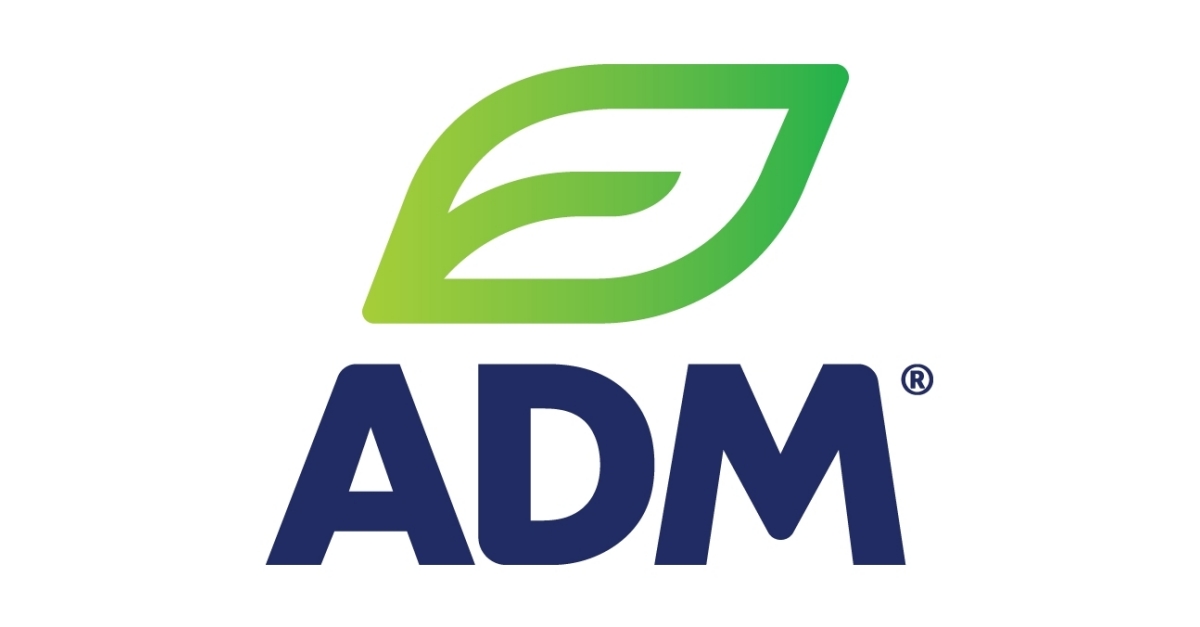ADM Exceeds 2 Million Regenerative Agriculture Acre Goal for 2023, Increases 2025 Goal to 5 Million Acres
ADM Exceeds 2 Million Regenerative Agriculture Acre Goal for 2023, Increases 2025 Goal to 5 Million Acres Business Wire


ADM Expands Global Regenerative Agriculture Program, Surpassing Acreage Goal

CHICAGO–(BUSINESS WIRE)–ADM (NYSE: ADM) announced today that its global regenerative agriculture program expanded to more than 2.8 million acres in 2023, exceeding its 2 million acre goal. In addition, the company announced that it is targeting 3.5 million regenerative acres in 2024 and is increasing its 2025 goal from 4 million to 5 million acres globally.
Driving Sustainability with Regenerative Agriculture
“ADM is scaling up efforts to enhance the sustainability and reduce the carbon footprint of the value chains in which we operate, and our leadership in regenerative agriculture is a key driver of that bold agenda,” said Greg Morris, president of ADM’s Ag Services and Oilseeds business. “We know that farmers are stewards of the land, and we offer an array of programs that meet their varied needs and empower each of them in the ways that work best for their individual situations. At the same time, we know that retail and CPG leaders understand the urgency of expanding regenerative agriculture to meet consumer demand, and we’re bringing those downstream customers together with farmers to ensure we’re meeting their needs. This collaborative approach, spanning the value chain, has demonstrated its value through our more than 2.8 million regenerative agriculture acres in 2023, and we’re excited to continue to expand our program and lead in this important global effort.”
Partnerships and Achievements
ADM partnered with more than 28,000 growers of corn, soybeans, wheat, peanuts, cotton, sorghum, canola, and barley in 2023 as it expanded its regenerative agriculture efforts globally, including the launch of new programs in Europe and Latin America. Participating farms again saw improvements in soil health and carbon footprint.
Last November, ADM issued its first-ever regenerative agriculture report, detailing priorities, goals, programs, and achievements to date. The company expects to issue an updated detailed report later this year.
Principles of Regenerative Agriculture
- Minimizing soil disturbance
- Maintaining living roots in soil
- Continuously covering bare soil
- Maximizing diversity with an emphasis on crops, soil microbes, and pollinators
- Responsibly managing inputs, including nutrients and pesticides
Collaborative Approach and Support
ADM offers unparalleled capabilities to create value for the entire value chain by partnering to implement and scale regenerative agriculture. The company works with downstream customers like PepsiCo, Nestlé, and Carlsberg; technology partners like Farmers Business Network; and conservation organizations like Practical Farmers of Iowa, Ducks Unlimited, and American Farmland Trust. ADM also participates in industry initiatives and coalitions such as Field to Market, Cool Farm Alliance, and Sustainable Agriculture Initiative. The company provides direct financial support for farmers, easy processes, cutting-edge technologies, and guidance from both internal and third-party experts.
About ADM
ADM unlocks the power of nature to enrich the quality of life. The company is an essential global agricultural supply chain manager and processor, providing food security by connecting local needs with global capabilities. ADM is a premier human and animal nutrition provider, offering a broad portfolio of ingredients and solutions from nature. The company is a trailblazer in health and well-being, with products for consumers looking for new ways to live healthier lives. ADM is also a cutting-edge innovator, guiding the way to a future of new consumer and industrial solutions. The company is committed to sustainability and works to decarbonize the multiple industries it serves. Learn more at www.adm.com.
Source: Corporate Release
Source: ADM
SDGs, Targets, and Indicators in the Article
1. Which SDGs are addressed or connected to the issues highlighted in the article?
- SDG 2: Zero Hunger
- SDG 13: Climate Action
- SDG 15: Life on Land
- SDG 17: Partnerships for the Goals
2. What specific targets under those SDGs can be identified based on the article’s content?
- SDG 2.4: By 2030, ensure sustainable food production systems and implement resilient agricultural practices that increase productivity and production, that help maintain ecosystems, that strengthen capacity for adaptation to climate change, extreme weather, drought, flooding and other disasters, and that progressively improve land and soil quality.
- SDG 13.2: Integrate climate change measures into national policies, strategies and planning.
- SDG 15.3: By 2030, combat desertification, restore degraded land and soil, including land affected by desertification, drought and floods, and strive to achieve a land degradation-neutral world.
- SDG 17.16: Enhance the Global Partnership for Sustainable Development, complemented by multi-stakeholder partnerships that mobilize and share knowledge, expertise, technology and financial resources, to support the achievement of the Sustainable Development Goals in all countries.
3. Are there any indicators mentioned or implied in the article that can be used to measure progress towards the identified targets?
Yes, there are indicators mentioned in the article that can be used to measure progress towards the identified targets. These indicators include:
- Expansion of regenerative agriculture program to more than 2.8 million acres in 2023
- Targeting 3.5 million regenerative acres in 2024 and increasing the 2025 goal to 5 million acres globally
- Partnership with over 28,000 growers of various crops
- Improvements in soil health and carbon footprint
Table: SDGs, Targets, and Indicators
| SDGs | Targets | Indicators |
|---|---|---|
| SDG 2: Zero Hunger | 2.4: By 2030, ensure sustainable food production systems and implement resilient agricultural practices that increase productivity and production, that help maintain ecosystems, that strengthen capacity for adaptation to climate change, extreme weather, drought, flooding and other disasters, and that progressively improve land and soil quality. | – Expansion of regenerative agriculture program to more than 2.8 million acres in 2023 – Targeting 3.5 million regenerative acres in 2024 and increasing the 2025 goal to 5 million acres globally – Partnership with over 28,000 growers of various crops – Improvements in soil health and carbon footprint |
| SDG 13: Climate Action | 13.2: Integrate climate change measures into national policies, strategies and planning. | – Expansion of regenerative agriculture program to more than 2.8 million acres in 2023 – Targeting 3.5 million regenerative acres in 2024 and increasing the 2025 goal to 5 million acres globally – Improvements in soil health and carbon footprint |
| SDG 15: Life on Land | 15.3: By 2030, combat desertification, restore degraded land and soil, including land affected by desertification, drought and floods, and strive to achieve a land degradation-neutral world. | – Expansion of regenerative agriculture program to more than 2.8 million acres in 2023 – Targeting 3.5 million regenerative acres in 2024 and increasing the 2025 goal to 5 million acres globally – Improvements in soil health and carbon footprint |
| SDG 17: Partnerships for the Goals | 17.16: Enhance the Global Partnership for Sustainable Development, complemented by multi-stakeholder partnerships that mobilize and share knowledge, expertise, technology and financial resources, to support the achievement of the Sustainable Development Goals in all countries. | – Partnership with over 28,000 growers of various crops – Collaboration with downstream customers, technology partners, and conservation organizations |
Copyright: Dive into this article, curated with care by SDG Investors Inc. Our advanced AI technology searches through vast amounts of data to spotlight how we are all moving forward with the Sustainable Development Goals. While we own the rights to this content, we invite you to share it to help spread knowledge and spark action on the SDGs.
Fuente: businesswire.com

Join us, as fellow seekers of change, on a transformative journey at https://sdgtalks.ai/welcome, where you can become a member and actively contribute to shaping a brighter future.







